Similar presentations:
Infertility. CSMU sub-faculty of Obstetrics & Gynecology
1. Infertility
CSMUsub-faculty of Obstetrics & Gynecology
Associate professor Kamilova I.K.
2. Definitions:
Infertility is defined as thefailure of a couple of
reproductive age to
conceive after at least 1 year
of regular coitus without
contraception.
3. Synonyms and related keywords:
• infertility, lack of pregnancy, fertility, invitro fertilization, conception problems,
pregnancy problems, assisted
reproductive technologies (ART), gamete
intra-fallopian transfer (GIFT), zygote
intrafallopian transfer (ZIFT), partial zone
dissection (PZD), sub zonal sperm
injection, assisted hatching, etc.
4.
Infertility is considered primarywhen it occurs in a woman who
has never established a
pregnancy and secondary when it
occurs in a woman who has a
history of one or more previous
pregnancies.
5.
Fertility is defined as the capacity toreproduce or the state of being fertile.
This term should be differentiated
from fecundability, which is the
probability of achieving a pregnancy
each month, and fecundity, which is
the ability to achieve a live birth within
one menstrual cycle
6. Incidence:
• Infertility affects approximately 15% ofcouples of reproductive age. In recent
years, there has been an increasing
demand for infertility services.
7.
The origin of infertility is similarly dueto male or female factors; the causes
are multiple. Female factors account
for 32% of infertility. Male factors
account for 18.8% of infertility. Male
and female factors combined cause
18.5% of fertility. The etiology is
unknown in 11.1%, and other causes
are identified in 5.6%.
8. Causes of Male Infertility
• Low sperm count; normally, menproduce at least 20 million sperms
per milliliter of semen (that's around
one sixth of the total ejaculate); fewer
is judged to be subfertile.
• Poor sperm motility; sperms will then
be unable to swim through the cervix
to meet the egg in the fallopian tube.
9. Causes of Male Infertility:
• Poor shape (known as 'morphology'),so that an individual sperm is unable
to penetrate the outer layer of an egg.
• Non-production of sperm. (because of
testicular failure) or complete
absence of sperm (perhaps because
of an obstruction)
10. Causes of Female Infertility
• Hormonal disorders; as a result, eggfollicles might not grow within the ovary, or
an egg might not be released (ovulation).
• Damaged or blocked fallopian tubes,
which will prevent an egg and sperm
meeting.
• Endometriosis, in which womb tissue
invades and damages neighboring
reproductive tissue.
• Excessively thick cervical mucus, which
prevents sperm passing through.
11. Evaluation.
• History and physical examination• Semen analysis
• Sperm–cervical mucus interaction
(postcoital testing)
• Testing for ovulation
• Evaluation of tubal patency
• Detection of uterine abnormalities
• Determination of peritoneal abnormalities
12. History:
• frequency and timing ofintercourse
• character of menstruation,
• information regarding to
impotence, dyspareunia, the use
of lubricants,
• sexually transmitted diseases.
13. Physical examination
• BP, PR, body T.• Height and weight to calculate the body mass index
(body mass/height).
• Eye examination to establish the presence of
exophthalmos (hyperthyroidism).
• The presence of epicanthus, lower implantation of the
ears and hairline, and webbed neck can be associated
with chromosomic abnormalities.
• Evaluation of thyroid gland to exclude enlargement or
thyroid nodules.
• Breast examination: breast development and to seek
abnormal masses or secretions (galactorrhea).
14. Physical examination:
• The abdominal examination should be directedto the presence of abnormal masses at the
hypogastrium level.
• The examination of the extremities to rule out
malformation (shortness of the fourth finger or
cubitus valgus, which can be associated with
chromosomal abnormalities and other congenital
defects.
• Examine the skin to establish the presence of
acne, hypertrichosis, and hirsutism.
15.
After the completion of allthese steps no abnormality or
cause of infertility can be
identified in 15% of couples.
This group comprises a
category known as
“unexplained infertility.”
16. Gynecological examination
• Evaluation of hair distribution, clitoris size,Bartholin glands, labia majora and minora,
and any condylomata acuminatum or other
lesions that could indicate the existence of
venereal disease.
• The inspection of the vaginal mucosa may
indicate a deficiency of estrogens or the
presence of infection.
17. Gynecological examination
• The evaluation of the cervix shouldinclude a Papanicolau test (Pap
smear) and cultures for gonorrhea,
Chlamydia, and Ureaplasma
urealyticum.
18. Bimanual examination:
• the direction of the cervix and thesize and position of the uterus in
order to exclude the presence of
uterine fibroids, adnexal masses,
tenderness, or pelvic nodules
indicative of infection or
endometriosis.
19. Pelvic ultrasonographic scan
• to establish an early diagnosis of adnexalmasses; to determine the size and aspect
of the ovaries; and to detect the presence
of endometrial polyps, submucous fibroids,
and hydrosalpinx.
20. Semen analysis
The semen sample should becollected after a period of abstinence
of at least 48 hours and should be
evaluated within 1 hour of ejaculation.
The sample is obtained either by
masturbation or by sexual intercourse
with a silicone condom, as latex
condoms are spermicidal.
21. Semen analysis
Normal parameters:
Volume - 2-5 mL
pH - 7.2-7.8
Sperm concentration - 20 million or greater
Motility - 50%, forward progression
Morphology - Normal sperm (50% or
greater)
White blood cells - Fewer than 1 million
cells/µL
22.
• Azoospermia - absence of sperm thatcould be related to congenital absence or
bilateral obstruction of the vas deferens or
ejaculatory ducts, history of
spermatogenesis arrest, Sertoli cell
syndrome, or postvasectomy.
• Oligozoospermia indicates a
concentration of fewer than 20 million
sperm/mL and could be associated with
ejaculatory dysfunction such as retrograde
ejaculation.
23.
• Asthenozoospermia indicates spermmotility of less than 50%. Extreme
temperatures and delayed analysis
after sperm collection are among the
factors that decrease sperm motility.
• Teratospermia indicates an
increased number of abnormal sperm
morphology at the head, neck, or tail
level.
24.
Hypospermia indicates a
decrease of semen volume to
less than 2 mL per ejaculation.
• Hyperspermia indicates an
increase of sperm volume to more
than 8 mL per ejaculation
25. Semen analysis:
• If abnormalities are present,the patient should be referred
to a urologist specializing in
infertility to be evaluated for
reversible causes of malefactor infertility.
26. The postcoital test (PCT or Huhner test)
• Allows direct analysis of sperm andcervical mucus interaction and provides a
rough estimate of sperm quality. The test
is done between days 12 and 14 of a 28–
30 day menstrual cycle (after 48 hours of
abstinence).
• The mucus is examined within 2–3.5 hours
after coitus for total number of sperm seen
per high-powered field and percentage
and quality of motility.
27. PCT (continuation)
• A satisfactory test is one in whichmore than 10 motile spermatozoa
are seen per high-powered field.
• An unsatisfactory test: no or few
spermatozoa seen; nonmotile
spermatozoa or those with a
“shaking” movement
28. PCT (continuation)
Possible reason of an unsatisfactorytest:
• azospermia (no spermatozoa in
ejaculate),
• poor inherent spermatozoa motility,
• hostile cervical mucus (infection,
antidodies, or not enough estrogen),
• poor coital technique.
29. PCT (continuation)
Other causes include:- cervical stenosis,
- hypoplastic endocervical canal,
- coital dysfunction
30. PCT (continuation)
• a finding of 5–10 progressively motilespermatozoa per high-power field and
clear acellular mucus with a
spinnbarkeit (the degree to which the
mucus stretches between two slides)
of 8 cm generally excludes a cervical
factor.
• Fecundity rates do not correlate
directly with number of motile sperm
seen.
31.
The sample can also beassessed for pH, mucus
cellularity, WBC, ferning.
32. Testing for ovulation:
• 1.measuring a rise in basal bodytemperature (BBT),
• 2.identifying an elevation in the
midluteal phase serum progesterone
concentration, and detection of
luteinizing hormone (LH) in the urine.
• 3. luteal phase endometrial biopsy
33. 1.The basal body temperature (BBT)
• After ovulation, risingprogesterone levels increase the
basal temperature by
approximately 0.22°C - 0.4°C
through a hypothalamic
thermogenic effect.
34. 2.Midluteal phase progesterone level
• Is another test to assess ovulation• a concentration greater than 3.0
ng/mL in a blood sample drawn
between days 19 and 23 is consistent
with ovulation,
• a concentration greater than 10
ng/mL implies adequate luteal
support.
35. 3.Urine LH kits
Unlike the rise in BBT and serumprogesterone concentrations, which
are useful for retrospectively
documenting ovulation, urinary LH
kits can be used to predict ovulation.
Ovulation usually occurs 24 to 36 hrs
after detecting the LH surge.
36. 4.Endometrial biopsy
• An endometrial biopsy evaluatesthe response of the endometrium
to progesterone.
• The test is usually performed
between days 24 and 26 of a 28 day
menstrual cycle or 2–4 days before
anticipated menstruation.
37. Endometrial biopsy (continuation)
• A luteal phase defect may resultfrom inadequate estrogen
priming, progesterone secretion,
or endometrial response.
38. Evaluation of tubal patency
• Tubal patency can be evaluatedby hysterosalpingography (HSG)
and/or by chromopertubation
during laparoscopy.
39. The hysterosalpingogram (HSG):
• Shows uterine and fallopian tube contourand tubal patency.
• It is performed in the early follicular phase,
within 1 week of cessation of menstrual
flow.
• Radiopaque dye injected through the
cervix. And passes through the uterine
cavity into the fallopian tubes and
peritoneal cavity. Permanent radiographic
films are made under fluoroscopy to
demonstrate patent or obstructed tubes
40. Diagnostic laparoscopy:
• assesses peritoneal and tubal factors(endometriosis and pelvic adhesions)
41. Treatment of cervical infertility
• An abnormal PCT because of chroniccervicitis: doxycycline 100 mg by
mouth twice daily for 7 days
• Reduced secretion of cervical mucus
due to destruction of the endocervical
glands by previous cervical
conization, freezing, or laser
vaporization: low-dose estrogen
therapy
• The most successful - IUI
42. Treatment of uterine factors
• Congenital absence of the uterus andvagina (Rokitansky-Küster-Hauser
syndrome) - surrogate mother or
gestational carrier.
• Uterine malformations: not require
treatment /or plastic surgery/ART
• Myoma, endometriosis:
medication/surgery
43. Tubal factor infertility:
• tubal cannulation,• microsurgical tubocornual
reanastomosis,
• IVF.
44. Treatment of anovulation:
stimulation of multiple ovarianfollicles:
• clomiphene citrate (CC),
• human menopausal gonadotropins
(hMG),
• purified follicle-stimulating hormone
(FSH).
45. Clomiphene Citrate (CC)
• The standard dose of CC is 50 mgPO qd for 5 days, starting on the fifth
menstrual cycle day or after
progestin-induced bleeding.
• The CC response is monitored using
pelvic US starting on the 12th
menstrual cycle day. The follicle
should develop to a diameter of 23-24
mm
46. Human menopause gonadotropins (hMG)
• Brand Names: Humegon, Organon,Pergonal, Serono, Repronex
• contains 75 U of FSH and 75 U of LH per
mL, although the concentration may vary
among batches (ranges from FSH at 6090 U and LH at 60-120 U)
• injected once daily for 5 days or more.
47. Luteal phase defects:
• intramuscular or intravaginalprogesterone until the
luteoplacental shift occurs at 8–10
weeks gestational age.
48. Treatment of Hyperprolactinemia:
• Inducing of ovulation :Bromocriptine in starting dose 2.5
mg each bedtime.
• CC is added if ovulation does not
occur within 3 months after
beginning treatment.
49. ASSISTED REPRODUCTIVE TECHNOLOGIES:
• Gamete intrafallopian transfer (GIFT):extraction of oocytes is followed by
the transfer of gametes (sperm and
oocyte) into a normal fallopian tube
by laparoscopy.
• Zygote intrafallopian transfer (ZIFT):
the placement of embryos into the
fallopian tube after oocyte retrieval
and fertilization
50. (continuation)
• In vitro fertilization (IVF):controlled ovarian
hyperstimulation,
ultrasonographically guided
aspiration of oocytes, laboratory
fertilization with prepared sperm,
embryo culture, and transfer of
the resulting embryos into the
uterus through the cervix.
51.
• A mature,unfertilized
egg.
52. EGG retrieval
• Eggretrieval is
usually
performed
through the
vagina with
an
ultrasoundguided
needle.
53.
• A fertilizedegg that has
divided once
and is now a
two-cell
embryo.
54.
• Embryotransfer is
performed
through the
cervix.
55. Indications for in vitro fertilization:
Tubal conditions
Endometriosis
Unexplained infertility
Male factor infertility
Uterine malformations
56. ASSISTED REPRODUCTIVE TECHNOLOGIES (continuation)
• intracytoplasmic sperm injection:single spermatozoon is injected
into each oocyte, and the resulting
embryos are transferred
transcervically into the uterus.
57.
• Intracytoplasmicsperm injection
58. Indications for Intracytoplasmic Sperm Injection
Very low numbers of motile sperm.
Severe teratospermia.
Problems with sperm binding to and penetrating the egg.
Antisperm antibodies thought to be the cause of
infertility.
• Prior or repeated fertilization failure with standard IVF
methods.
• Frozen sperm limited in number and quality.
• Obstruction of the male reproductive tract not amenable
to repair. Sperm may then be obtained from the
epididymis by a procedure called microsurgical
epididymal sperm aspiration (MESA), or from the testes
by testicular sperm aspiration (TESA).
59. ICSI
• Intracytoplasmicsperm injection
(ICSI), in which a
sperm is injected
directly into an
egg to facilitate
fertilization.
60.
• ICSIinvolves
injecting
sperm
directly
into the
egg
61. Controlled ovarian hyperstimulation (protocol):
• CC is given on days 5–9 of the menstrualcycle in dose 50 mg/day for 5 days. If no
effect, the dose is increased to 100
mg/day. The maximum dose is 250
mg/day.
• Human chorionic gonadotropin (hCG),
5000 IU to 10,000 IU, may be used to
simulate an LH surge
62. Controlled ovarian hyperstimulation (continuation):
• CC/hMG combinations - The hMG is givenfor 2–7 days after the clomiphene. Trade
names for hMG include Humegon,
Pergonal, and Repronex.
• To complete oocyte maturation, hCG
needs to be given once the follicles have
reached 17–18 mm in diameter.
• Aspiration of follicles should be timed 35–
36 hours after the hCG injection.
63.
• Ovarian follicles,stimulated by
ovulation drugs,
visible on ultrasound.
The dark, circular
areas
are the follicles.
























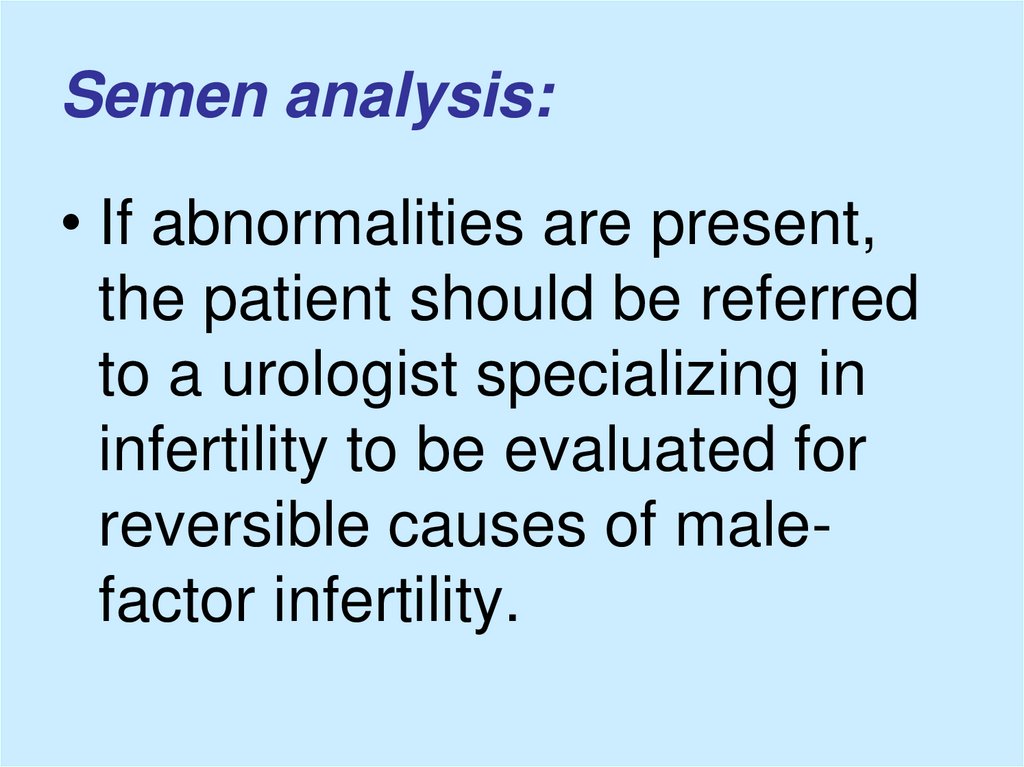




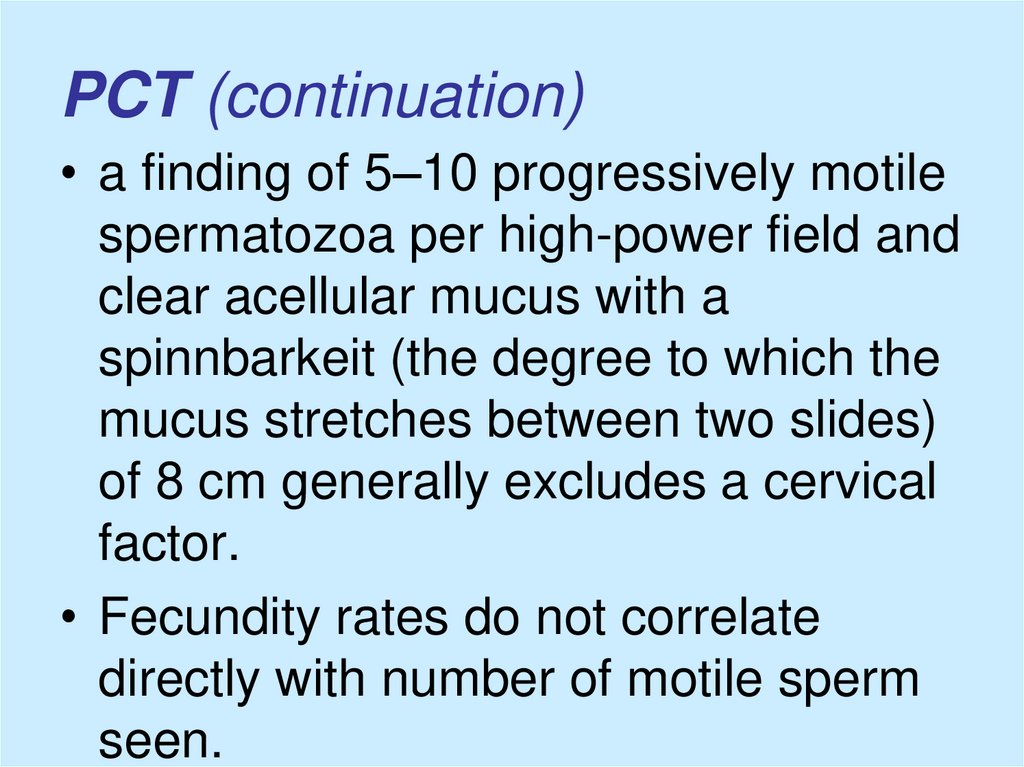


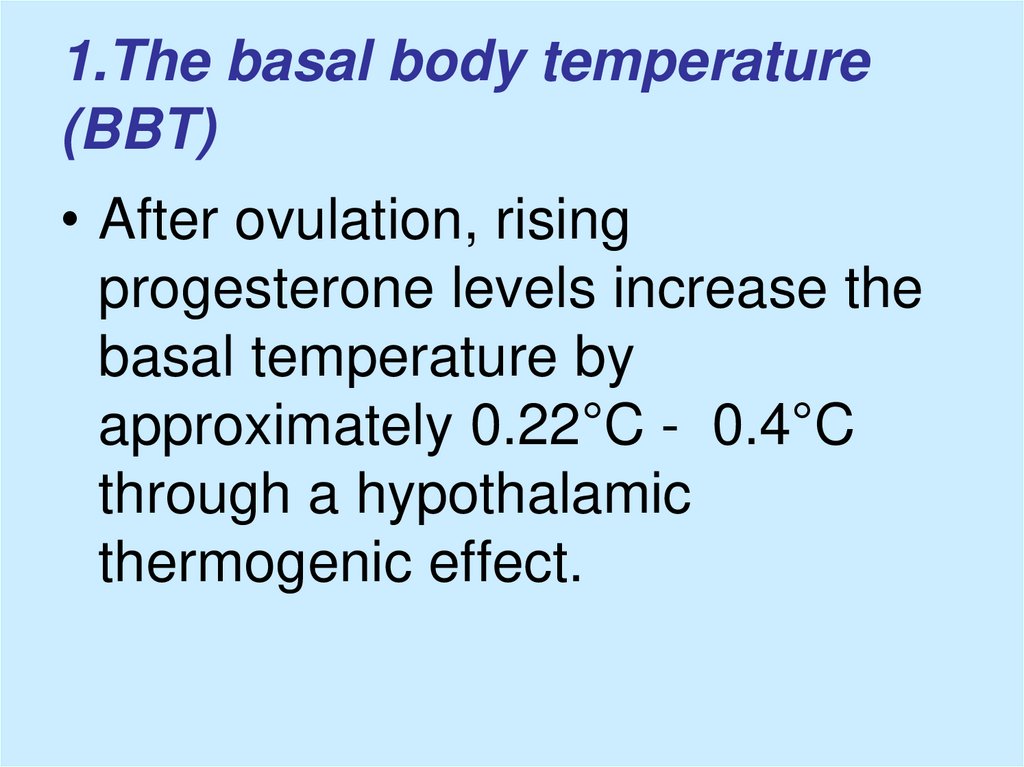






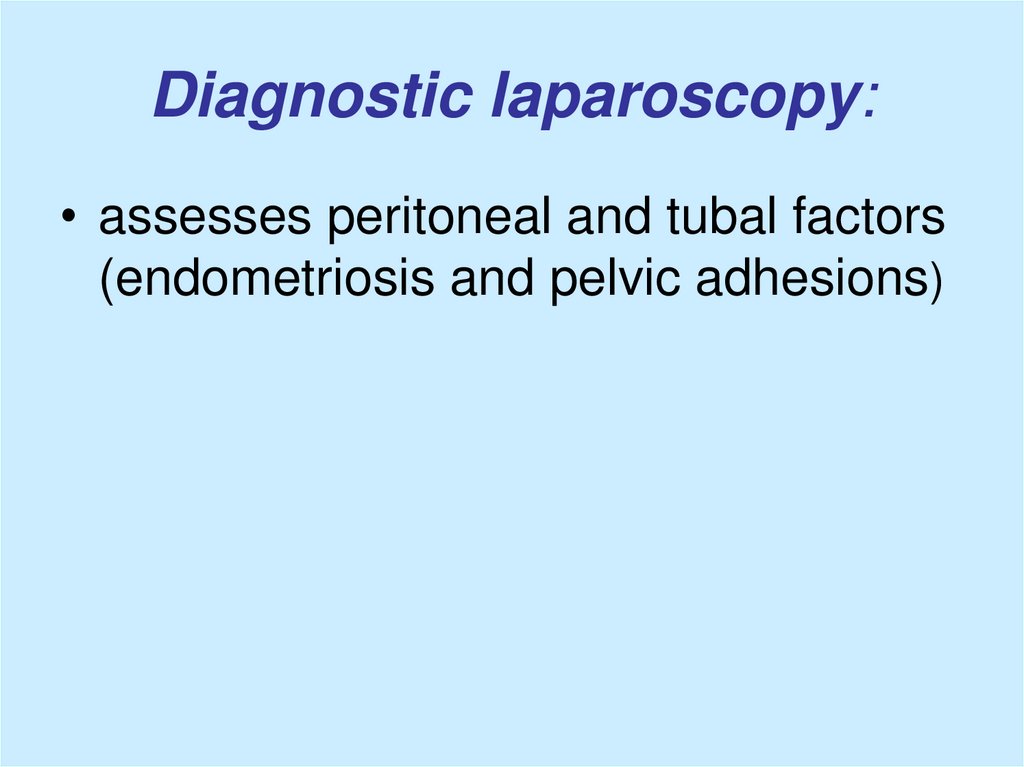


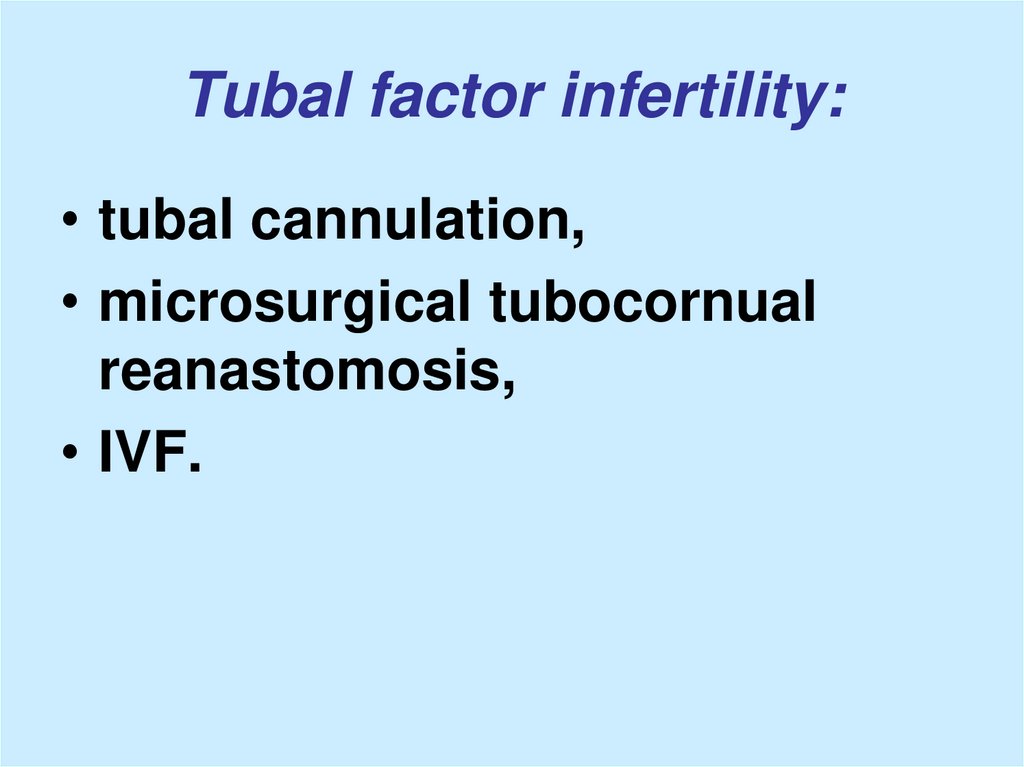









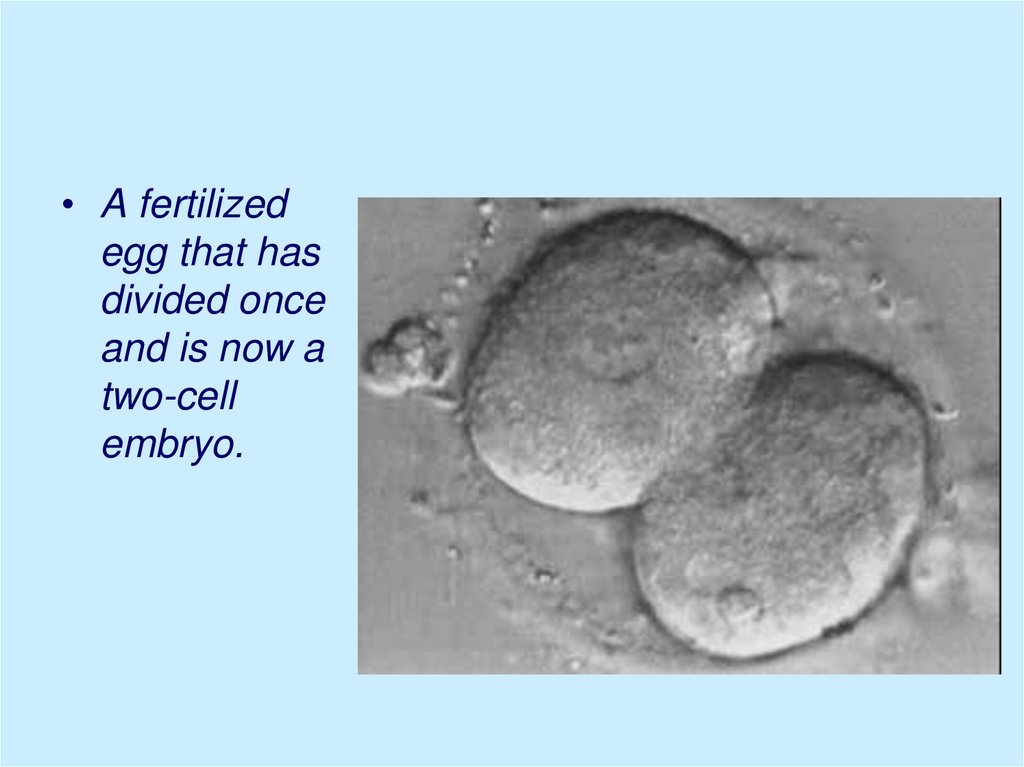




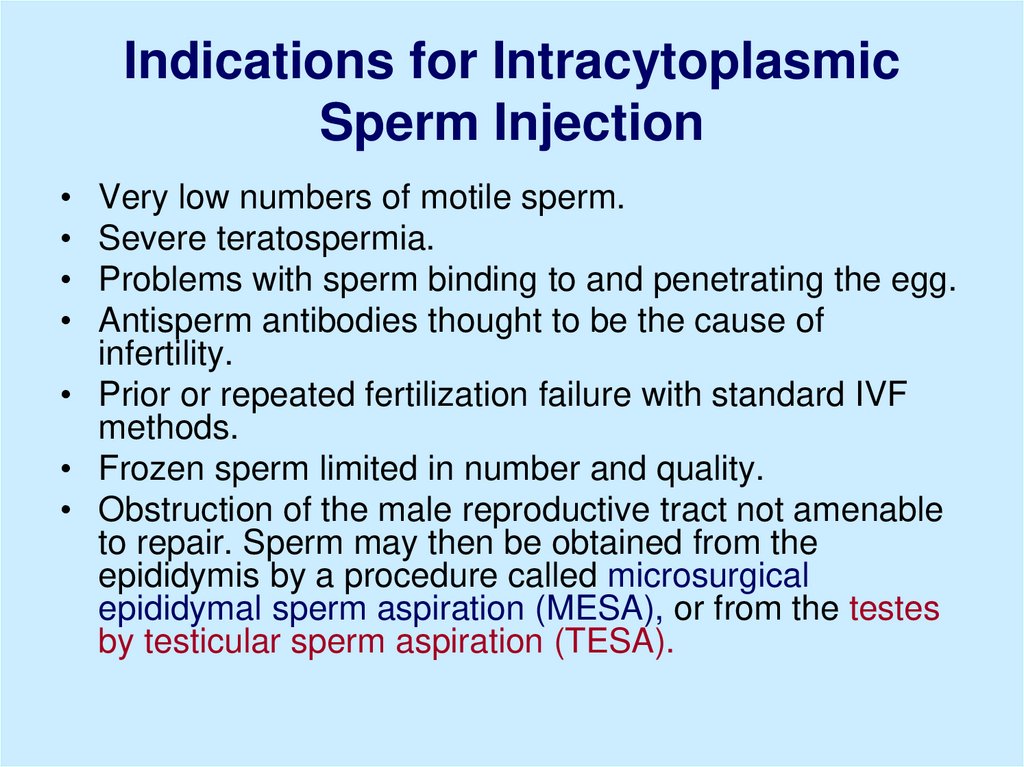


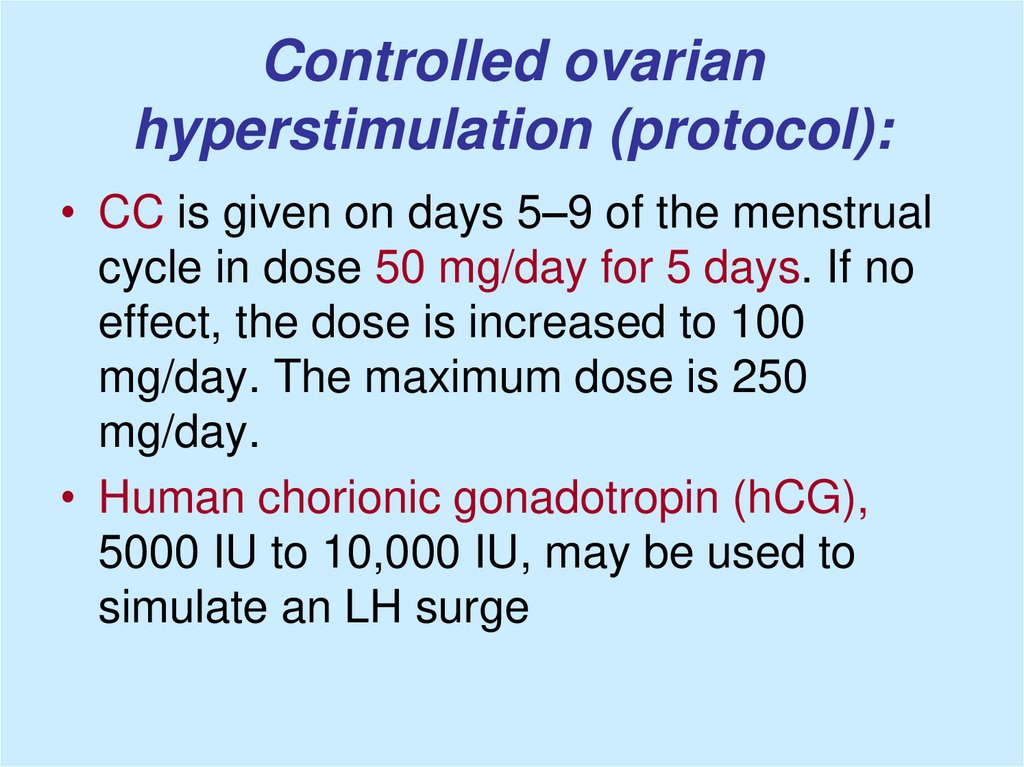





 biology
biology








